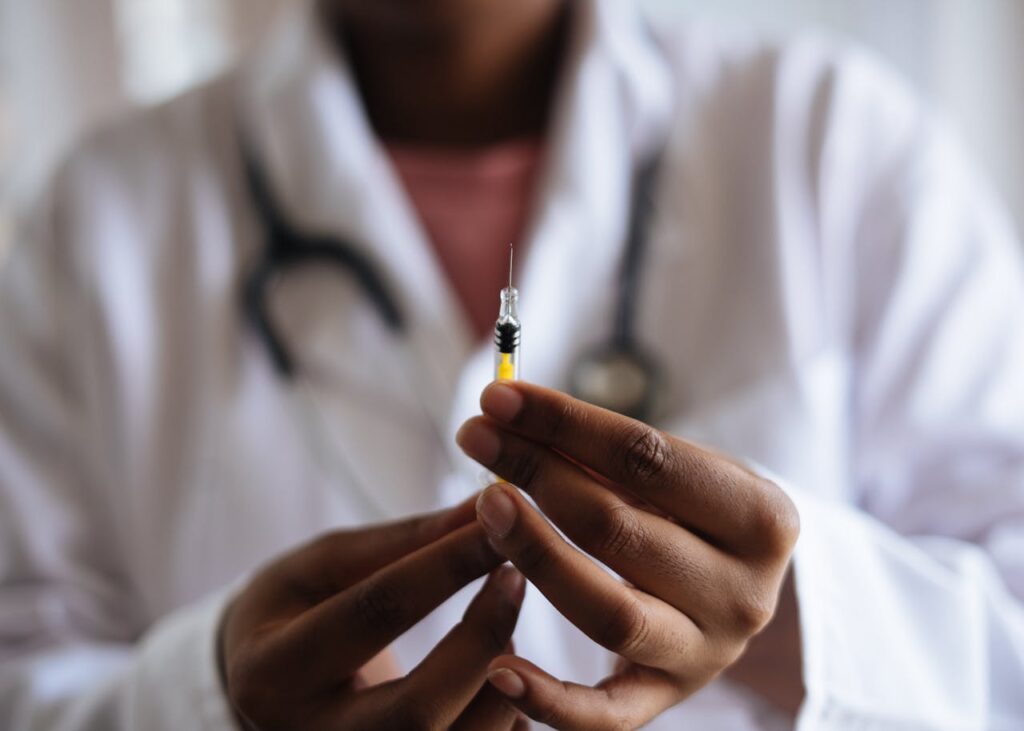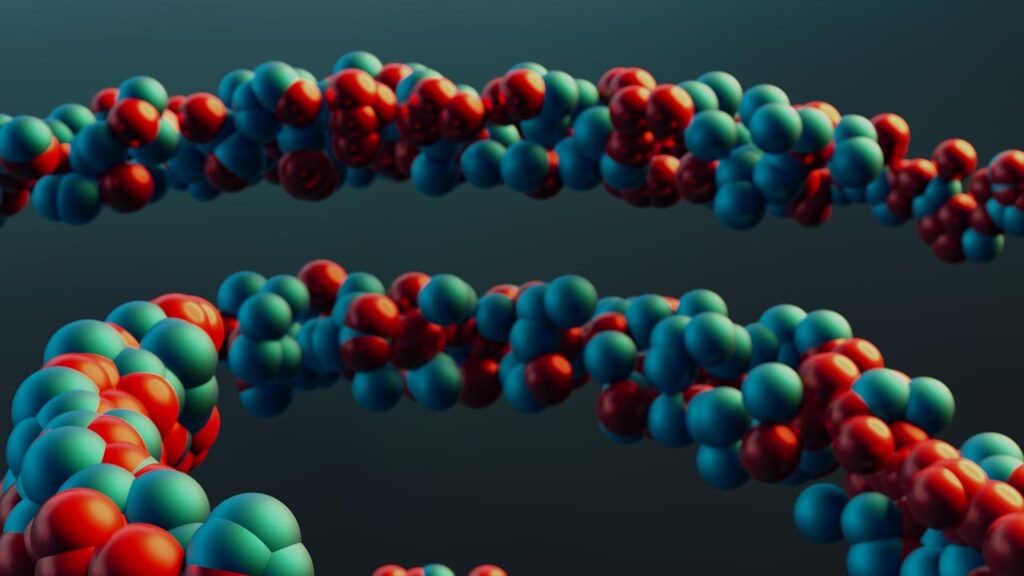Columbia Researchers Created an Injection That Melts Belly Fat Without Harming Your Body
Last updated on
What if the future of weight management is not about cutting or burning fat away, but about teaching it to change? At Columbia University, scientists have developed a nanomaterial called P-G3 that does not simply remove fat but reprograms it at the cellular level, raising the possibility of a healthier and more sustainable way to think about our bodies.
Why Visceral Fat Remains Medicine’s Toughest Challenge
In the pursuit of healthier bodies, few obstacles have proven more difficult than visceral fat—the deep, abdominal fat that surrounds critical organs such as the liver and pancreas. Unlike the fat that rests just beneath the skin, visceral fat is metabolically active, secreting inflammatory compounds that can set the stage for diabetes, cardiovascular disease, and chronic illness. It is also notoriously resistant to diet and exercise.
This complexity is why traditional methods often fall short. Liposuction can physically remove fat, but it damages surrounding tissues in the process. Fat-reducing drugs tend to act systemically, impacting the entire body and introducing side effects that may outweigh the benefits. Injections that permanently destroy fat cells risk uneven distribution, while pharmaceuticals sometimes carry long-term risks. The difficulty is compounded by age-related hormonal changes and high cortisol levels triggered by chronic stress, both of which accelerate visceral fat accumulation in older adults.

Scientists at Columbia University are now exploring a different solution: a positively charged nanomaterial called P-G3. By targeting fat cells directly, it promises the ability to regulate fat without harming the tissue the body still needs for insulation and hormone balance. As the research team explained, “The ability to target fat cells and safely uncouple unhealthy fat formation from healthy fat metabolism would be the answer to many people’s prayers.”
What makes this approach noteworthy is that it reframes fat management as a question of precision rather than destruction. Instead of forcing the body into extremes, P-G3 suggests a future where treatment is smarter, safer, and tailored to the complexity of human biology.
How P-G3 Reprograms the Body’s Most Stubborn Cells
What sets P-G3 apart from conventional treatments is not what it destroys, but what it teaches. Most fat-reducing methods rely on physical removal or cellular destruction, approaches that often bring collateral damage. P-G3, by contrast, relies on a more refined process: cellular reprogramming.
The nanomaterial’s positively charged design allows it to bind to the negatively charged extracellular matrix within fat tissue. This interaction creates a precise delivery system, limiting spillover and protecting surrounding structures like muscles, nerves, and other vital organs. In effect, P-G3 influences only the fat depots it is meant to reach.

Once injected, the shift begins. Fat cells stop behaving like oversized storage units and instead resemble the smaller, energy-burning cells more commonly seen in newborns and elite athletes. This rejuvenation signals a move toward metabolic health rather than excess accumulation. As Dr. Kam Leong explained, “Our studies highlight an unexpected strategy to treat visceral adiposity and suggest a new direction of exploring cationic nanomaterials for treating metabolic diseases.”
The mechanism is twofold. P-G3 suppresses mTOR signaling, a pathway that drives fat storage and growth. At the same time, it reduces NAD+ levels inside fat cells, preventing their progression into lipid-heavy giants. The outcome is a recalibrated fat depot that functions like a more efficient metabolic engine.

This dual action is what makes the research compelling. Beyond shrinking fat cells, P-G3 appears to foster a healthier tissue environment overall. That includes more balanced cell turnover, lower inflammation, and the preservation of fat’s essential roles in cushioning organs and regulating hormones. Or as Dr. Leong noted with striking clarity, “With P-G3, fat cells can still be fat cells, but they can’t grow up.”
From Research Breakthrough to Practical Application
One of the challenges in moving laboratory discoveries into real-world therapies is safety. With P-G3, researchers at Columbia University have developed a next-generation variant called P-G3-Chol(5). By tagging the nanomaterial with cholesterol, the particles self-assemble and demonstrate sharper accuracy in targeting fat tissue. This refinement reduces the likelihood of unintended buildup in vital organs such as the liver or kidneys.
In preclinical trials with mice, the results have been notable. Those treated with P-G3-Chol(5) recorded up to a 45 percent reduction in fat mass. Importantly, these changes occurred without loss of lean muscle, without altered appetite, and without shifts in physical activity levels. The fat reduction was achieved through reprogramming, not through lifestyle disruption or tissue destruction.
The specificity of this approach is particularly significant for future applications. A localized delivery system means that drugs or gene therapies could one day be directed solely to fat depots, reducing the systemic side effects that have historically limited treatment options. Researchers even see potential for revisiting drugs like thiazolidinediones, once shelved over cardiovascular risks, by redirecting their power exclusively to adipose tissue.
The implications extend beyond metabolic health. P-G3 may also have a role in aesthetics. Much like Botox redefined noninvasive approaches to muscles, P-G3 could offer a targeted, non-surgical method for refining fat in areas such as the chin, upper arms, or abdomen. This dual capacity—serving both health and cosmetic goals—positions the platform as one of the more versatile innovations in fat research to date.
Columbia’s team continues to refine the chemistry of the nanomaterial, with patents already filed and broader safety trials in development. Their long-term vision is a tunable therapeutic platform capable of reshaping how obesity, metabolic disorders, and fat-related conditions are managed in the clinic and beyond.
What You Can Do Right Now
While P-G3 remains in the research phase, its underlying science highlights how lifestyle factors can influence the way fat behaves. These steps, supported by current evidence, can help foster healthier fat metabolism:
- Prioritize Quality Sleep Consistent, restorative sleep is one of the most overlooked tools for health. Studies from the National Institutes of Health show that inadequate sleep raises visceral fat levels by disrupting hormones such as cortisol and insulin. Aiming for seven to eight hours each night helps restore balance and supports more efficient fat regulation.
- Manage Stress Proactively Stress is not just an emotional burden—it directly shapes fat distribution. Chronic stress elevates cortisol, which drives fat storage around the abdomen. Building routines that include mindfulness practices, journaling, or quality time with friends and family can lower cortisol levels and reduce the risk of stress-related fat buildup.
- Choose Nutrient-Dense Foods Crash diets often strip the body of essential nutrients while doing little to improve long-term fat metabolism. A balanced approach—lean proteins, whole grains, fresh fruits and vegetables, and healthy fats—encourages the body to use energy more effectively. This mirrors P-G3’s goal of helping fat function more intelligently rather than simply storing excess.
- Incorporate Regular Movement Exercise continues to be one of the most reliable ways to improve fat health. Even moderate activities like brisk walking, cycling, or light strength training can make a measurable difference. The Centers for Disease Control and Prevention recommends at least 150 minutes of moderate activity weekly to lower inflammation and train the body to use fat as fuel.
- Stay Informed on Emerging Research P-G3 is still in preclinical testing, but it represents a future where fat may be managed with greater precision. Keeping up with updates from institutions like Columbia University or the World Health Organization ensures you are informed about new therapies as they move closer to real-world use.
Reprogramming Fat, Rethinking Health
The research around P-G3 is still in its early stages, but its message is already powerful. For decades, fat has been treated as something to eliminate—cut away, frozen, or burned. What Columbia University’s work suggests is that the future of fat management may not be destruction at all, but transformation.
If P-G3 fulfills its promise, it could one day redefine how we approach obesity, metabolic disease, and even aesthetics. More importantly, it represents a shift in perspective. Fat is not simply the enemy. It is a living, functional tissue that can be guided toward better balance. That idea challenges us to rethink the way we talk about health, the choices we make, and the science we support.
Whether in the lab or in daily life, progress often comes not from erasing what is flawed, but from teaching it to work differently. P-G3 may offer that possibility for the body. The rest is up to us—to embrace change not through extremes, but through smarter, more sustainable paths forward.
Some of the links I post on this site are affiliate links. If you go through them to make a purchase, I will earn a small commission (at no additional cost to you). However, note that I’m recommending these products because of their quality and that I have good experience using them, not because of the commission to be made.

































 JOIN OVER
JOIN OVER
Comments